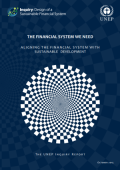This year, for the first time ever, nearly all of the world’s countries are making pledges to help limit future climate change. As of 1 October 2015, 147 countries (representing about 85% of global emissions) have submitted their Intended Nationally Determined Contributions. These pledges, if carried out in full, are expected to lower emissions relative to the ‘business as usual’ forecast. However, they are not expected to prevent emissions from increasing above today’s level through 2030. To meet the global goal of limiting mean global temperature change to 2°C relative to the pre-industrial level, much more will need to be done after 2030. Eventually, emissions will have to fall to zero worldwide – either that, or countries will need to remove carbon dioxide directly from the atmosphere. This new Vox eBook looks into what needs to be done to build a climate regime that is both workable and effective.

This report presents a model that analyses fossil fuel subsidy reform across 20 countries showing an average reduction in national GHG emissions of 11% by 2020, and average annual government savings of USD 93 per tonne of CO2 abated. With a modest recycling of resources to renewables and energy efficiency, emissions reductions can be improved to an average of 18%. Some countries have included reforms in Intended Nationally Determined Contributions, toward a climate agreement. The report presents case studies from Morocco, Philippines and Jordan and was authored by the Global Subsidies Initiative of IISD, as part of the Nordic Prime Ministers’ green growth initiative.
Eco-innovation globally emerged as an effort to implement sustainable development. States and firms established and implemented policies and strategies for eco-innovation as one route to achieving sustainable development. Eco-innovation has been facilitated in developed countries, specifically OECD members and European countries, through action plans. Recently, eco-innovation policies have emerged in developing countries. Thus, this study analyzes eco-innovation policies in Asian countries. Policies related to eco-innovation in 17 Asian countries were investigated using policy instrument categories. National policies for eco-innovation were interpreted and compared with development stage classifications. The results indicate that there are similar and different policy approaches to eco-innovation in Asian countries. Given the balance between a technology push (supply side) and a market pull (demand side) in policy instruments for eco-innovation, 17 countries were identified by four categories: leaders, followers, loungers, and laggards. The results provide insight for designing national strategies for eco-innovation in Asia’s developing countries.

Green development emphasizes co-development between economic and environmental dimensions, and is a people-centered sustainable development approach. Western China demands green development, and international experience could provide necessary, unique and important help and support for Western China to achieve its green development goals. This paper has made a comprehensive overall review and analysis of international experience in green development policy and its implementation, in particular, OECD countries’ (mostly Australia and Canada) experience have been analyzed following the major policy foci defined by the Task Force on Strategy and Policies on Environment and Development in Western China initiated by China Council for International Cooperation on Environment and Development (CCICED). Data and information were gathered from the field surveys and investigations, expert meetings, as well as literature review. The main sections include policy framework and road map establishment, implementation and performance assessment, co-development between economic development and environmental protection, as well as green employment and poverty alleviation.
